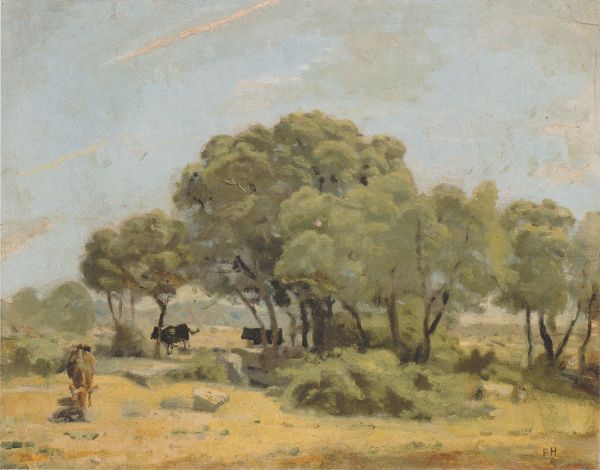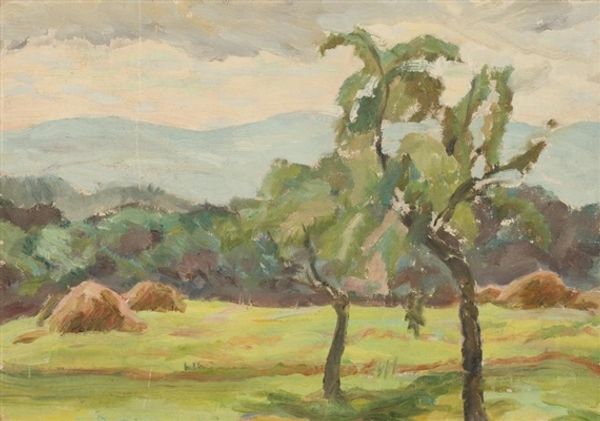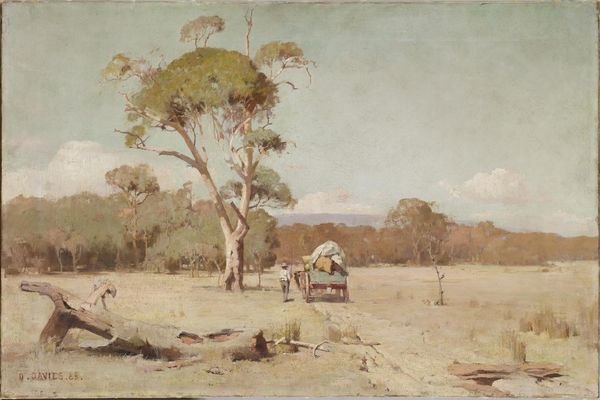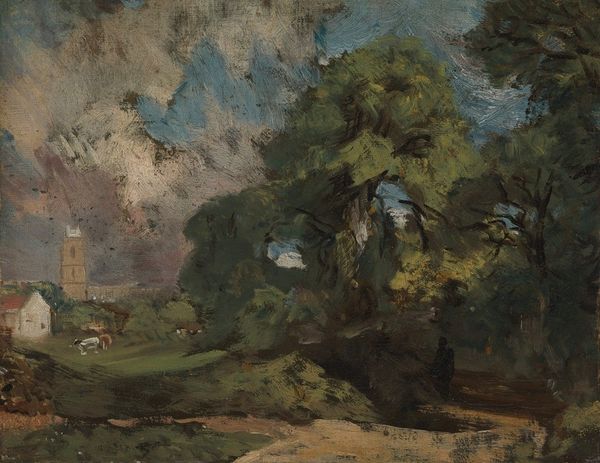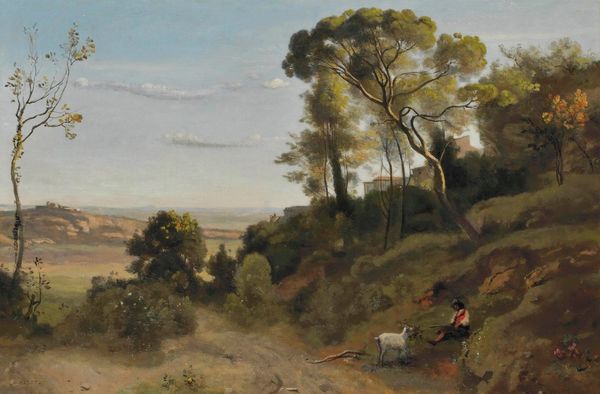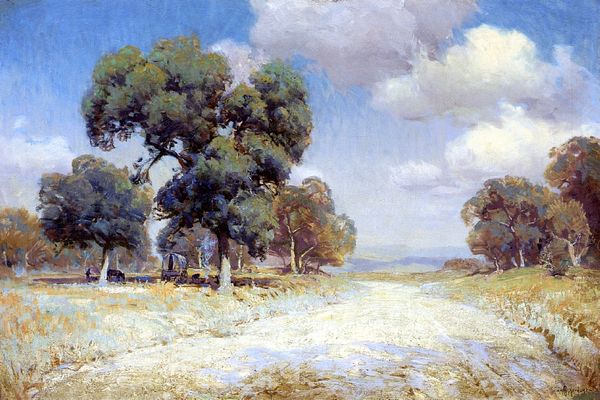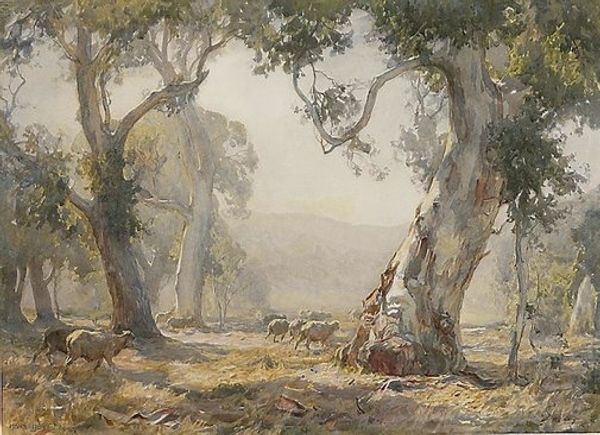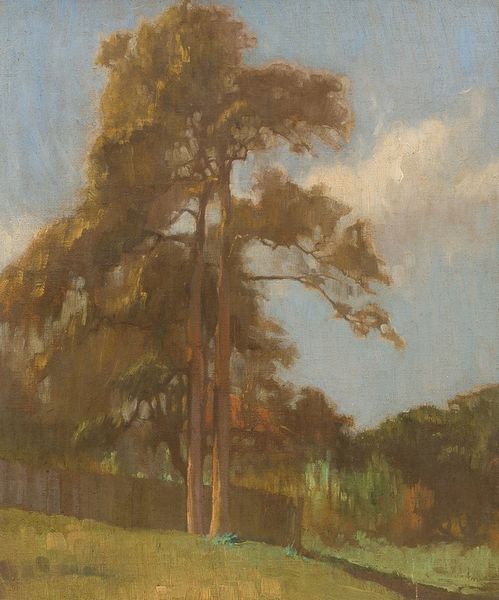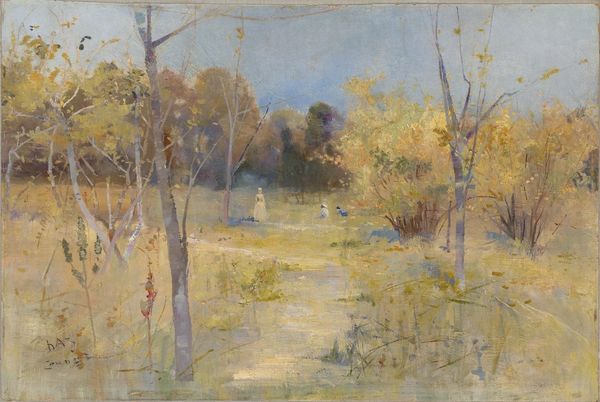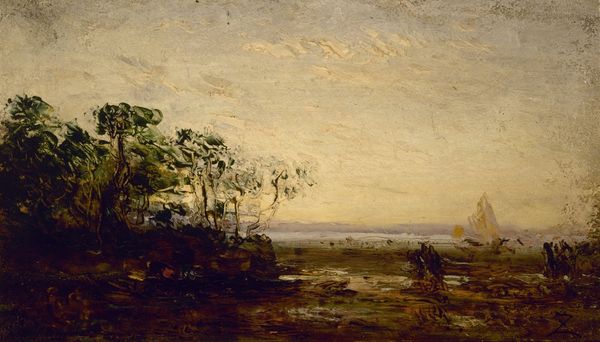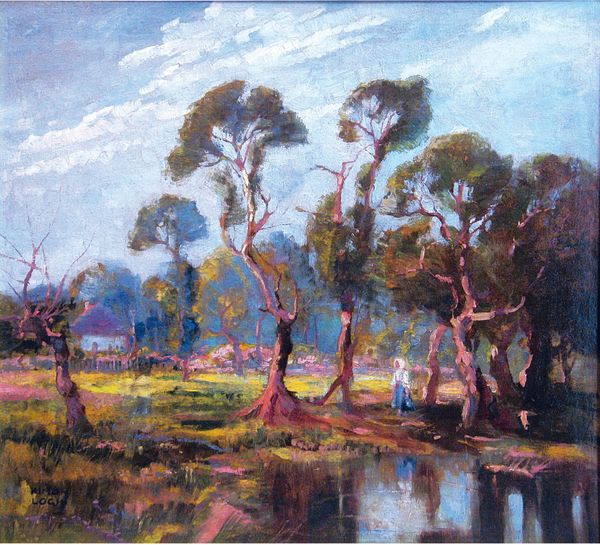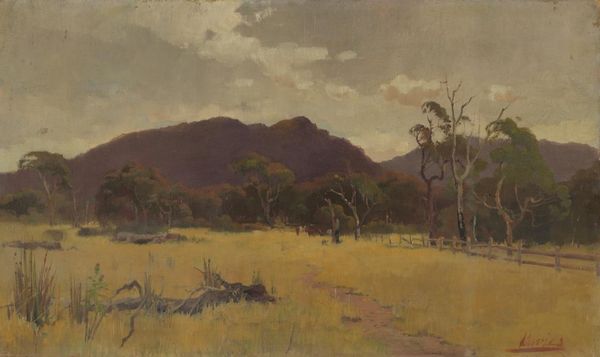
Copyright: Public domain
Curator: Looking at David Davies' "Ercildoune, near Ballarat," painted in 1888, one immediately gets a sense of the rural labor and land ownership shaping Australia at that time. Oil on canvas, a common medium for conveying status and permanence. What strikes you first about it? Editor: Honestly, the loneliness. That small figure walking toward the distant trees under this vast sky... there's a real sense of isolation, even beauty, in that vast emptiness. It speaks of an endless possibility... or maybe just endless work! Curator: Exactly! And consider the materiality—oil paint itself. Ground pigments mixed with linseed oil, carefully applied in plein-air conditions to capture the specific light and atmosphere of Ercildoune. This connects directly to debates around representing the "true" Australian landscape versus idealized European visions. Editor: The color palette also really hits home. The muted greens and yellows, that soft light—it all feels very tangible. I can almost feel the dry heat of the Australian outback looking at that dirt road and distant blue horizon. There’s definitely a romantic vibe fighting against a sense of the real! Curator: Precisely, David Davies wasn't just painting pretty pictures; he was actively participating in a cultural and political discourse about Australian identity through his engagement with the specific textures, conditions and social dynamics present at a precise time and place. Editor: So much landscape art becomes about just... owning the land. But in a weird way, Davies manages to portray this owned territory in a more neutral sense. There is work and living occuring in his images but neither idealized or totally cast down, perhaps Davies captures what living here truly feels like: lonely but free. Curator: It certainly brings a complex tension between the visual aesthetic pleasure of landscape, labor relations and an economic means, using brushstrokes and colors that point towards impressionism but dealing with an environment that asks what is impressionism, but Australian. Editor: You know, reflecting on this, it shifts between the poetic and almost harsh, creating this deep sense of longing within me. Curator: Yes, I think you nailed it in revealing its complexity in context and as a sensory experience. There's no real peace but a certain reality captured that feels real.
Comments
No comments
Be the first to comment and join the conversation on the ultimate creative platform.
